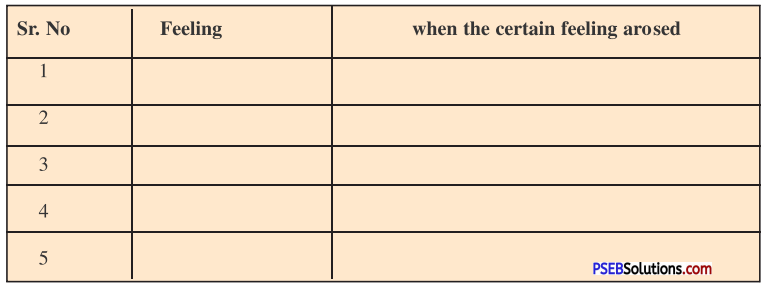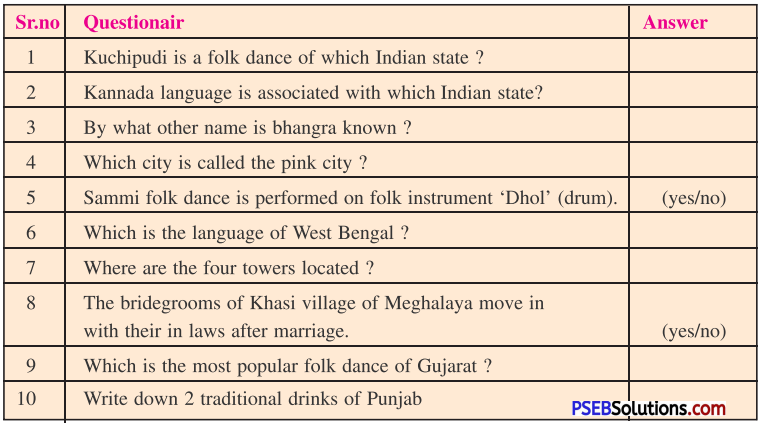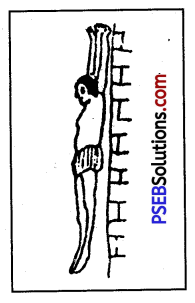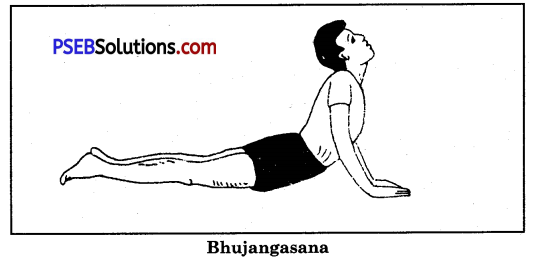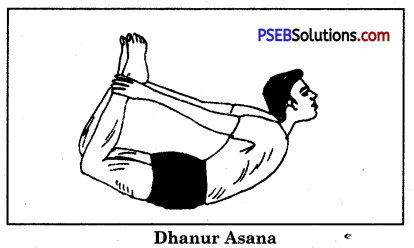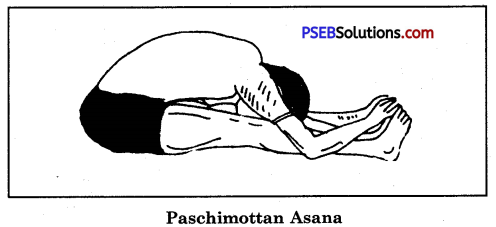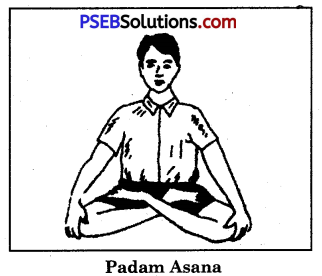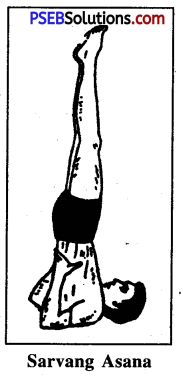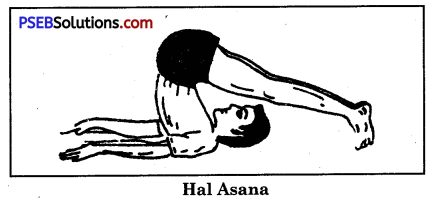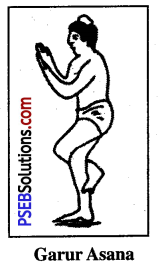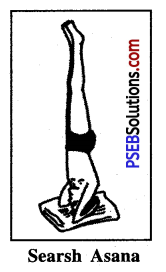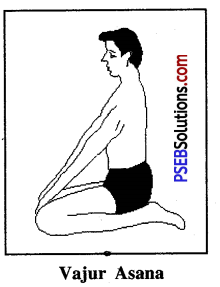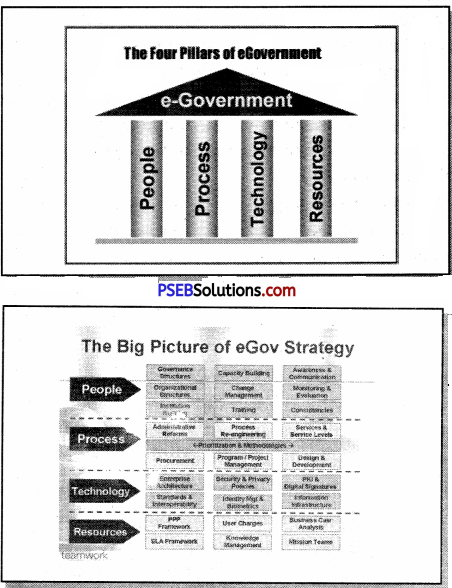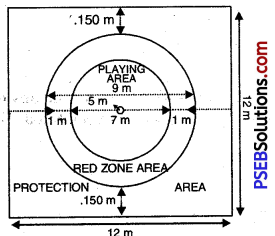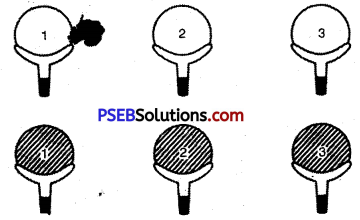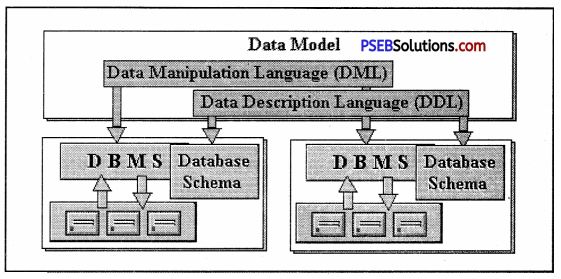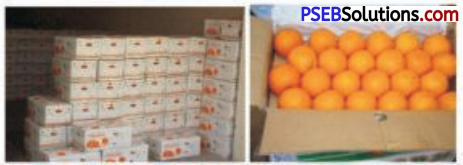Punjab State Board PSEB 12th Class Sociology Book Solutions Chapter 11 Female Foeticide and Domestic Violence Textbook Exercise Questions and Answers.
PSEB Solutions for Class 12 Sociology Chapter 11 Female Foeticide and Domestic Violence
Sociology Guide for Class 12 PSEB Female Foeticide and Domestic Violence Textbook Questions and Answers
Multiple Choice Questions:
1. According to 2011 census, the sex ratio in India is:
(a) 939
(b) 940
(c) 943
(d) 942
Answer:
(c) 943
2. Sex ratio can be defined as:
(а) Number of females per 100 males
(b) Number of males per 100 females
(c) Number of females per 1000 males
(d) None of the above
Answer:
(c) Number of females per 1000 males

3. In the state of Punjab, district with highest sex ratio is:
(a) Hoshiarpur
(b) Bathiitda
(c) Ludhiana
(d) Amritsar
Answer:
(a) Hoshiarpur
4. Female foeticide test includes:
(a) Ultra sound
(b) MRI.
(c) X-rays
(d) Weighing Machines
Answer:
(a) Ultra sound
5. The main cause of female foeticide is:
(a) Increased sex ratio
(b) Patriarchal mindset
(c) Preference for girls
(d) None
Answer:
(b) Patriarchal mindset
6. Which is a form of Domestic Violence?
(a) Legal
(b) Physical Abuse
(c) Society
(d) Economic
Answer:
(b) Physical Abuse
7. Which factor does not perpetuate Domestic Violence?
(a) Cultural
(b) Economic
(c) Social
(d) Pedagogy
Answer:
(ci) Pedagogy
8. The Act, according to which a daughter has an equal share in the property of her parents is
(a) Legal property Act
(b) Hindu Property Act
(c) Civil Act
(d) Divine Act
Answer:
(b) Hindu Property Act
Fill in the Blanks:
1. Sex determination test includes ……………
Answer:
ultrasound
2. ……………….. is one of the main reasons for female foeticide.
Answer:
Patriarchal system
3. The evil practice of ……………….. is responsible for female foeticide in Indian society.
Answer:
Dowry
4. ……………….. keeps declining in India while a bit is improved in ……………… state.
Answer:
Sex ratio, Punjab
5. …………………. should be implemented properly in order to combat female foeticide.
Answer:
Laws
6. ……………… abuse may be inflicted in many ways such as hitting, slapping, punching, pushing and other form of physical contact resulting in bodily sufferings to the victim,
Answer:
Physical
7. The couples living alone or with children, or an individual parent with children are called ………………. households.
Answer:
Nuclear
8. ………………. studies must be made compulsory as part of school, college and university syllabus.
Answer:
Gender and Human Rights
9. ……………… is defined as socially unacceptable and abusive behaviour by one or other or both the members in a close and intimate relationship like marriage or a family.
Answer:
Domestic Violence

True/False:
1. Ultrasound is the pre diagnostic test for determination of sex.
Answer:
True
2. Law does not help to generate awareness about female foeticide.
Answer:
False
3. Sex ratio has improved in Punjab according to qensus 2011.
Answer:
True
4. Awareness programmes can sensitise about the ill effects of female foeticide.
Answer:
True
5. Cultural and ritual norms have no effect on female foeticide.
Answer:
False
6. Newly married couple must be made aware that a small family need not only include male children.
Answer:
True
7. The greed for dowry, desire for a male child and alcoholism of the spouse are major factors of domestic violence against women in rural areas.
Answer:
True
8. Wife beating does not reflects domestic violence.
Answer:
False
9. History of domestic violence dates back to the pre-historic period.
Answer:
True
10. spousal domestic violence also affects the children of the family.
Answer:
True

Match The Columns:
| Column A |
Column B |
| Female Foeticide |
The killing of the girl child |
| Sex Ratio |
Marital Rape |
| Patriarchy |
The killing of the female foetus in the womb |
| Female Infanticide |
Females per 1000 males |
| Form of Domestic Violence |
Male dominance |
Answer:
| Column A |
Column B |
| Female Foeticide |
The killing of the female foetus in the womb |
| Sex Ratio |
Females per 1000 males |
| Patriarchy |
Male dominance |
| Female Infanticide |
The killing of the girl child |
| Form of Domestic Violence |
Marital Rape |
Very Short Answer Type Questions:
Question 1.
What is the sex ratio of India as per the census 2011?
Answer:
According to census survey 2011, the sex ratio in India is 1000: 943.
Question 2.
What is the sex ratio of Punjab as per the census 2011?
Answer:
According to census survey 2011, the sex ratio in Punjab is 1000: 895.
Question 3.
Which districts in Punjab have the highest and lowest sex ratio?
Answer:
Hoshiarpur (961) and Bathinda (869) respectively.
Question 4.
Describe full form of PNDT.
Answer:
Pre Natal Diagnostic Techniques.
Question 5.
What is meant by domestic violence?
Answer:
Domestic violence is that socially unacceptable and wrong behaviour which an individual does with his closest relatives such as wife or family.
Question 6.
List any two factors of domestic violence.
Answer:
Economic dependence of women over men and lower economic status of women are the two factors of domestic violence.
Question 7.
What do you mean by female foeticide?
Answer:
After sex determination test, killing of female foetus in mother’s womb is known as female foeticide.

Question 8.
List the causes of wife battering.
Answer:
Male dominated society, males are powerful than females, economic dependence of women over men, consuming drugs, illiteracy of women etc.
Short Answer Type Questions:
Question 1.
Define female foeticide.
Answer:
When a woman gets pregnant, the sex determination of foetus is conducted. In case of female foetus, an abortion is done. It is known as female foeticide. Sex determination test is conducted after 18 weeks of pregnancy.
Question 2.
Define sex ratio.
Answer:
To know about the equality between men and women, it is must to look for the sex ratio. The number of females behind every 1000 males at a particular time and in a particular area is known as sex ratio. In 2011, it was 1000: 943 in India.
Question 3.
What are the two causes of female foeticide?
Answer:
- Dowry: At the time of girl’s marriage, dowry is given to her in-laws. People do female foeticide so that dowry should not be given.
- Wish of boy: People like to have a boy as they think that boy will take care of them in old age and will give fire at the time of funeral.
Question 4.
What is the status of female in India?
Answer:
The status of female in India is not good. Only 65% of females are educated. Most of the social evils are attached with females such as rape, abduction, dowry system, female foeticide etc. Just because of these evils, status of females is still low in the present modern age.
Question 5.
Why is male child preferred in India?
Answer:
People want to have a male child because they think that their son will take care of them in their old age. Along with this, he will give fire to their funeral pyre. Moreover he will continue the family.
Question 6.
Write down three causes of domestic violence.
Answer:
- Males are physically stronger than females.
- Females economically depend upon males.
- The social status of females and children is not good.
Question 7.
What is the difference between domestic violence and violence?
Answer:
In domestic violence, we can include violence committed with wife, children, brothers etc. and such behaviour is not acceptable in society. Violence is done between two individuals or groups and most of the times, they are strange. Communal violence is its best example.

Question 8.
What is wife battering?
Answer:
The meaning of wife battering is doing violence with wife by husband. Generally husband considers that wife is under him and thinks that whatever he will say, she will have to accept it. If she refuses it, she is beaten up and this is known as wife battering.
Question 9.
What are the consequences of female foeticide?
Answer:
- Female foeticide leads to decline in sex ratio.
- Whole balance of society disturbs as it is considered that both male and.female are not equal in number.
- It leads to lower social status of women.
Question 10.
List cultural factors of domestic violence.
Answer:
There can be many cultural factors of domestic violence such as gender based socialisation, division of gender based roles, right of son over property, giving importance to males in family, marriage and dowry system, use of violence to end conflict etc.
Long Answer Type Questions:
Question 1.
Write a short note on female foeticide.
Answer:
Since last few decades, the major cause of declining sex ratio is female foeticide. It means the killing of unborn girl in the womb of her mother. People wish to have a boy and that’s why after sometime of pregnancy, a sex determination test is conducted on the mother. If the foetus is boy, it’s fine but if it’s girl, abortion is conducted. In this way, girl is killed before her birth. This is known as female foeticide. It leads to reduction in number of girls and disturbance in sex ratio.
Question 2.
Discuss any two measures to combat female foeticide.
Or
Write down any two measures to combat female foeticide.
Or
Explain the contribution of government in combating the problem of female foeticide.
Answer:
- The Indian government has passed many laws and in the section 312-316 of Indian Penal Code, forcing any female to abort her child is illegal.
- To stop the increasing number of female foeticide, government passed an Act i.e. Pre-Natal Diagnostic Techniques (Regulation and Prevention of Misuse) Act, 1994 in which conducting sex determination test was declared illegal. If any one will conduct this test, provisions of punishment were kept in the Act.
Question 3.
Discuss any two consequences of female foeticide.
Or
Discuss effects of female foeticide.
Answer:
- Impact on female’s health. People prefer to abort the foetus until a male foetus comes. It’has a very bad impact on the health of mother and her new born baby.
- Impact on Sex ratio. Female foeticide can have adverse impact on sex ratio. It leads to decline in number of girls which further creates many problems such as rape, dowry deaths, polygamy, prostitution etc.
Question 4.
Why is sex ratio declining in India? Explain.
Answer:
- People wish to have a boy and that’s why they try to have a male child.
- Due to female foeticide, sex ratio is declining.
- Female infanticide is also responsible for decline in sex ratio.
- Dowry is given at the time of girl’s marriage and that’s why people prefer to have a male child.
- People think that with male child, family will continue and that’s why they prefer to kill their daughters even before their birth.
Question 5.
Name two social problems that give rise to female foeticide.
Answer:
- Dowry: Dowry is given at the time of daughter’s marriage which is one of the important problems of our society. People prefer to opt for female foeticide not to give dowry. If there will be a male child, dowry will come to their home.
- Violence against women: Almost in all the societies of the world, females face many types of violence such as rape, abduction, dowry deaths, prostitution, wife battering etc. These are the reasons that people prefer to have a male child.
Question 6.
Write causes of domestic violence.
Or
Two reasons for Domestic Violence.
Answer:
- People consume alcohol to stay away from tension. When wives and children ask them not to use it, they beat them up and increase domestic violence.
- There are many people who are angry by nature and they even beat up their children on petty things.
- Few individuals are drug addicts. If they don’t have money to buy drugs, they beat up their family members to get money.
- Few people always remain in sorrow due to their poverty and occasionally they beat up their family members to take out their frustration.
Question 7.
Write remedies for wife battering.
Answer:
- The Indian government has made many laws but they are not implemented properly. They should be properly implemented to save wives from their husbands.
- Police must solve such cases with great care. Policemen must be given special training to solve the cases of domestic violence.
- Children and young people must be educated against domestic violence to prepare them for future times.
Question 8.
List the legal reforms to curb female foeticide.
Answer:
- According to section 312-316 of the Indian Penal Code, doing abortion is illegal.
- According to The Medical Termination of Pregnancy Act, 1971, law was little bit relaxed and on medical, humanitarian or on any other ground, abortion was permitted.
- The major base of female foeticide is sex determination of child. That’s why ‘Pre-Natal Diagnostic Techniques (Regulation and Prevention of Misuse) Act, 1994 was passed and sex determination test was declared illegal. If any ultrasound centre will conduct this test, provisions were kept to close down this centre.
Question 9.
What are the effects of domestic violence?
Answer:
- It can have bad impact on female’s health. She has to face all this physically and psychologically. It can have wrong impact on family atmosphere.
- Wife battering can have wrong impact on children. Their daily work gets affected and can have wrong impact on their education. Children start to hate their father when they observe their mother is beaten by father.
- That female always remains in mental tension who faces domestic, violence and is greatly affected from all aspects. This psychological tension affects other aspects of their life as well.
Question 10.
What is scenario of domestic violence agaisnt women in India?
Answer:
Domestic violence against women in India is quite common among all the other domestic violences. The common reason of this is the set ideology of people that females are physically and mentally weaker than males. Yet females are proving that they are no inferior than males in all the sectors but even then number of cases of domestic violence are much more against them. Its reasons are different in different countries. According to the Population Fund Report of United Nations, around two third of the Indian females are the victims of domestic violence. Around 70% married females are the victims of beating, rape or forced sex. Out of these, around 55% of the cases come from Bihar, Uttar Pradesh, Madhya Pradesh and other north Indian states.

Very Long Answer Type Questions:
Question 1.
Write a detailed note on sex ratio.
Answer:
In simple words the number of females behind 1000 males in one square kilometer is known as the sex ratio. It means chat how many females are there for every 1000 males in a particular area. This process is given the name of sex ratio. Relation of the word sex ratio is related with demographic features of population of any country. If we want to know anything about any country’s population then we must know about sex ratio. In 2011 India’s Sex ratio was 1000: 943. It means there were 943 females behind every 1000 males in any particular area.
If we want to know about the status of women in any society then we can come to know about it only by looking at the sex ratio of that society. From this, we can come to know that what type of status has been given to females by that society. If sex ratio is low then status of women is low but if sex ratio is high then the status of women is definitely high. In this way the meaning of sex ratio is number of females in any particular area as compared to males. If we will have information about number of males and females of any country then we can easily come to know about sex ratio of that country. Here child sex ratio is also quite important with sex ratio. Meaning of child sex ratio is that how many girls, with age group of 0-6 years, are there for 1000 boys in population of the country.
If we look at the sex ratio in whole world especially of few major countries then in the year of 2000 there “were 986 females behind 1000 males. This sex ratio is 1000: 1029 in U.S.A. 1000 ; 944 in China, 1000: 1025 in Brazil, 1000: 1041 in Japan, 1000: 933 in India, 1000: 938 in Pakistan, 1000: 953 in Bangladesh and 1000: 1004 in Indonesia. From this data, it is clear that number of females are more as compared to males in developed countries but this number is quite less in developing countries. It is so because gender discrimination is more in backward countries but it is almost negligible in the developed countries.
Condition Of Sex Ratio In India:
The condition of sex ratio in India is not good. According to Census Survey of 2011, there were only 940 females in India as compared to 1000 males. This worrying condition could be understood only by looking at the given .table:
| Year |
Males |
Females |
| 1901 |
1000 |
972 |
| 1911 |
1000 |
964 |
| 1921 |
1000 |
959 |
| 1931 |
1000 |
950 |
| 1941 |
1000 |
945 |
| 1951 |
1000 |
946 |
| 1961 |
1000 |
941 |
| 1971 |
1000 |
930 |
| 1981 |
1000 |
934 |
| 1991 |
1000 |
927 |
| 2001 |
1000 |
933 |
| 2011 |
1000 |
943 |
Here we can see another table related with sex ratio which is state-wise data of sex ratio in India.
| Year |
State/U.T. |
Males |
Females |
| 2011 |
UttarPradeah |
1000 |
908 |
| 2011 |
Maharathtra |
1000 |
925 |
| 2011 |
Bthar |
1000 |
916 |
| 2011 |
West Bengal |
1000 |
947 |
| 2011 |
Andra Pradesh |
1000 |
992 |
| 2011 |
Tamil Nadu |
1000 |
995 |
| 2011 |
Madhya Pradesh |
1000 |
930 |
| 2011 |
Raashtan |
1000 |
926 |
| 2011 |
Karnataka |
1000 |
968 |
| 2011 |
Gujarat |
1000 |
918 |
| 2011 |
Oriasa |
1000 |
978 |
| 2011 |
Kerala |
1000 |
1084 |
| 2011 |
Jharkhand |
1000 |
947 |
| 2011 |
Assam |
1000 |
954 |
| 2011 |
Pnjab |
1000 |
893 |
| 2011 |
Haryana |
1000 |
877 |
| 2011 |
Chhatisgarh |
1000 |
991 |
| 2011 |
Delhi |
1000 |
866 |
| 2011 |
Jainmu and Kashmir |
1000 |
883 |
| 2011 |
Uttrakhand |
1000 |
963 |
| 2011 |
Himachal Pradesh |
1000 |
974 |
| 2011 |
Thpura |
1000 |
961 |
| 2011 |
Meghalaya |
1000 |
986 |
| 2011 |
Mampur |
1000 |
987 |
| 2011 |
Nagaland |
1000 |
931 |
| 2011 |
Gos |
1000 |
968 |
| 2011 |
Arunachal Pradesh |
1000 |
920 |
| 2011 |
Puducherry |
1000 |
1038 |
| 2011 |
Chandigarh |
1000 |
18 |
| 2011 |
Mizoram |
1000 |
975 |
| 2011 |
Sikkim |
1000 |
889 |
| 2011 |
Andaman and Nicobar Islands |
1000 |
878 |
| 2011 |
Dadra and Nagar Haveli |
1000 |
775 |
| 2011 |
Daman and Diu |
1000 |
618 |
| 2011 |
Lakahadweep |
1000 |
946 |
From these two tables, it is clear that during 1901-2001, sex ratio in India has declined to a great extent. During 1941-1951, 1981-1991 and 1991-2011, the number of females were increased but during rest of the decades, the number of females were decreased. If we compare the decades of 1901 and 2001 than number of females or sex ratio has been decreased upto 40 females per 1000 males. Only Kerala is a state and Puduchery is the alone union territory where this ratio is favourable for females. In Kerala 1084 females are there for 1000 males and in Puduchery this ratio is 1000:1038. But this is 877 in Haryana, 893 in Punjab and 818 in Chandigarh. So from this it is clear that this declining sex ratio is really a cause of worry for us.
Question 2.
What do your understand by females foeticide? Describe its causes and consequences.
Or
What do you mean by female foeticide? Explain its causes.
Or
What is female foeticide? Explain its impacts.
Answer:
The word female foeticide is made up of two words female and foeticide. The meaning of female is girl and foeticide is killing foetus. So, if we look at the literal meaning of female foeticide it is killing of females foetus in mother’s womb. Actually this concept of female foeticide came forward in last few decades when sex ratio of our country started declining.
Meaning of Female Foeticide. Due to many reasons, people wish to have a boy. They use many methods to get .a boy in place of a girl. When a female gets pregnant, during first three months, foetus is not yet fully developed. It is still known as foetus. These days, many new modern techniques have come forward which tell us that the foetus is of boy or girl. Such test is known as sex determination test. If the foetus is of boy, it’s fine but if it is of girl, it is aborted or terminated. It is known as female foeticide. Just because of female foeticide, the sex ratio in India started declining. In 2011, it was 943 girls behind 1000 boys.
Causes of Female Foeticide. When the foetus of a girl is terminated in the mother’s womb, it is called female foeticide. This is one of the social problems which came forward in last few decades. It can have many reasons which are given-below:
1. Traditional Society. The problem of female foeticide prevails more in traditional society. If we compare developed societies such as U.S.A., U.K. etc. with the traditional societies such as India, China, Pakistan etc., we observe that sex ratio is quite less in traditional societies. It is so because people have a tendency in such societies that they need a boy for the continuation of family and to give fire to their funeral pyre. Due to such tendencies, number of boys increase in traditional societies as people prefer to have a boy.
2. Wish to have a male child. Generally people wish to have a boy for the continuation of family and to give fire to their funeral pyre after death. Moreover people know if there will be a girl, they will have to give lot of dowry at the time of her marriage. Along with this, they’ll have to give a lot even after girl’s marriage. That’s why people don’t want girl and they even try for this. They do not hesitate from killing female foetus. In this way wish to have a boy also increases female foeticide.
3. Technological Advances. During ancient times, people did’t have access to technological advances as they were not available. So, it was not possible to conduct sex determination test. They had to wait till child’ birth. If it was girl, she was killed at the time of her birth. But with time, many techniques came forward which made it possible to know about the sex of child. Just after 18 weeks of pregnancy, ultrasound machines tell us that the foetus is boy or girl. Thousands of clinics and nursing homes came forward which terminate female foetus. They even kill unborn girl in the womb of mother. New tools have made this work quite easy. In this way technological advancements are responsible for female foeticide.
4. Patriarchal Society. Our society is basically a patriarchal society and males dominate our houses. They take care of the house and take all the important decisions. In such societies, the status of females is quite low and everything is done according to the wish of males. Females cannot do anything with their wish. Males in such society wish to have boys at home and they do not hestitate from committing female foeticide. Females have to accept this as it is the decision of males. In this way, they are forced to accept this wrong act.
Consequences of Females Foeticide: The problem of female foeticide can have some dangerous consequences on society which are given below:
1. Declining Sex Ratio. If we look at the record of the past 100 years we can see that during last 100 years of 1901-2001, the sex ratio has declined quite considerably. Yet, the number of females increased during the decades of 1971-1981 and 1991-2001 but in rest of the decades, it decreased quite considerbely. In India, only Kerala is the state with positive sex ratio. This no. is 1000: 1084 in Kerala. It is 1000: 1038 in Puduchery. But in Haryana it is 1000: 877, in Chandigarh 1000: 818 and in Punjab it is 1000: 893. In this way we can say that the declining sex ratio is a major cause of concern in society.
2. Violence Against Women. Female foeticide leads to decline in sex ratio which
further leads to increase in violence against women. Girls are killed either before birth or new born girls are killed. Even people abandon their daughters in trains. Females have to face violence as they have given birth to girl, not boy. Many have to face sex based violence such as rape, abduction, prostitution etc. ‘
3. Low Status of Women. Declining sex ratio leads to decline in social status of women. If any female is unable to give birth to boy and is bearing only female child, she is forced to opt for abortion. Social evils and social institutions are also responsible for this and it can have an adverse impact on social status of females.

Question 3.
Explain the role of government in combating the problem of female foeticide.
Answer:
See Question No. 8 of Long answer type questions (IV).
Question 4.
Write a detail note on female foeticide.
Answer:
The word female foeticide is made up of two words female and foeticide. The meaning of female is girl and foeticide is killing foetus. So, if we look at the literal meaning of female foeticide it is killing of females foetus in mother’s womb. Actually this concept of female foeticide came forward in last few decades when sex ratio of our country started declining.
Meaning of Female Foeticide. Due to many reasons, people wish to have a boy. They use many methods to get .a boy in place of a girl. When a female gets pregnant, during first three months, foetus is not yet fully developed. It is still known as foetus. These days, many new modern techniques have come forward which tell us that the foetus is of boy or girl. Such test is known as sex determination test. If the foetus is of boy, it’s fine but if it is of girl, it is aborted or terminated. It is known as female foeticide. Just because of female foeticide, the sex ratio in India started declining. In 2011, it was 943 girls behind 1000 boys.
Causes of Female Foeticide. When the foetus of a girl is terminated in the mother’s womb, it is called female foeticide. This is one of the social problems which came forward in last few decades. It can have many reasons which are given-below:
1. Traditional Society. The problem of female foeticide prevails more in traditional society. If we compare developed societies such as U.S.A., U.K. etc. with the traditional societies such as India, China, Pakistan etc., we observe that sex ratio is quite less in traditional societies. It is so because people have a tendency in such societies that they need a boy for the continuation of family and to give fire to their funeral pyre. Due to such tendencies, number of boys increase in traditional societies as people prefer to have a boy.
2. Wish to have a male child. Generally people wish to have a boy for the continuation of family and to give fire to their funeral pyre after death. Moreover people know if there will be a girl, they will have to give lot of dowry at the time of her marriage. Along with this, they’ll have to give a lot even after girl’s marriage. That’s why people don’t want girl and they even try for this. They do not hesitate from killing female foetus. In this way wish to have a boy also increases female foeticide.
3. Technological Advances. During ancient times, people did’t have access to technological advances as they were not available. So, it was not possible to conduct sex determination test. They had to wait till child’ birth. If it was girl, she was killed at the time of her birth. But with time, many techniques came forward which made it possible to know about the sex of child. Just after 18 weeks of pregnancy, ultrasound machines tell us that the foetus is boy or girl. Thousands of clinics and nursing homes came forward which terminate female foetus. They even kill unborn girl in the womb of mother. New tools have made this work quite easy. In this way technological advancements are responsible for female foeticide.
4. Patriarchal Society. Our society is basically a patriarchal society and males dominate our houses. They take care of the house and take all the important decisions. In such societies, the status of females is quite low and everything is done according to the wish of males. Females cannot do anything with their wish. Males in such society wish to have boys at home and they do not hestitate from committing female foeticide. Females have to accept this as it is the decision of males. In this way, they are forced to accept this wrong act.
Consequences of Females Foeticide: The problem of female foeticide can have some dangerous consequences on society which are given below:
1. Declining Sex Ratio. If we look at the record of the past 100 years we can see that during last 100 years of 1901-2001, the sex ratio has declined quite considerably. Yet, the number of females increased during the decades of 1971-1981 and 1991-2001 but in rest of the decades, it decreased quite considerbely. In India, only Kerala is the state with positive sex ratio. This no. is 1000: 1084 in Kerala. It is 1000: 1038 in Puduchery. But in Haryana it is 1000: 877, in Chandigarh 1000: 818 and in Punjab it is 1000: 893. In this way we can say that the declining sex ratio is a major cause of concern in society.
2. Violence Against Women. Female foeticide leads to decline in sex ratio which
further leads to increase in violence against women. Girls are killed either before birth or new born girls are killed. Even people abandon their daughters in trains. Females have to face violence as they have given birth to girl, not boy. Many have to face sex based violence such as rape, abduction, prostitution etc. ‘
3. Low Status of Women. Declining sex ratio leads to decline in social status of women. If any female is unable to give birth to boy and is bearing only female child, she is forced to opt for abortion. Social evils and social institutions are also responsible for this and it can have an adverse impact on social status of females.
Question 5.
What do you understand by female foeticide? Explain various measures to combat this problem.
Answer:
The word female foeticide is made up of two words female and foeticide. The meaning of female is girl and foeticide is killing foetus. So, if we look at the literal meaning of female foeticide it is killing of females foetus in mother’s womb. Actually this concept of female foeticide came forward in last few decades when sex ratio of our country started declining.
Meaning of Female Foeticide. Due to many reasons, people wish to have a boy. They use many methods to get .a boy in place of a girl. When a female gets pregnant, during first three months, foetus is not yet fully developed. It is still known as foetus. These days, many new modern techniques have come forward which tell us that the foetus is of boy or girl. Such test is known as sex determination test. If the foetus is of boy, it’s fine but if it is of girl, it is aborted or terminated. It is known as female foeticide. Just because of female foeticide, the sex ratio in India started declining. In 2011, it was 943 girls behind 1000 boys.
Causes of Female Foeticide. When the foetus of a girl is terminated in the mother’s womb, it is called female foeticide. This is one of the social problems which came forward in last few decades. It can have many reasons which are given-below:
1. Traditional Society. The problem of female foeticide prevails more in traditional society. If we compare developed societies such as U.S.A., U.K. etc. with the traditional societies such as India, China, Pakistan etc., we observe that sex ratio is quite less in traditional societies. It is so because people have a tendency in such societies that they need a boy for the continuation of family and to give fire to their funeral pyre. Due to such tendencies, number of boys increase in traditional societies as people prefer to have a boy.
2. Wish to have a male child. Generally people wish to have a boy for the continuation of family and to give fire to their funeral pyre after death. Moreover people know if there will be a girl, they will have to give lot of dowry at the time of her marriage. Along with this, they’ll have to give a lot even after girl’s marriage. That’s why people don’t want girl and they even try for this. They do not hesitate from killing female foetus. In this way wish to have a boy also increases female foeticide.
3. Technological Advances. During ancient times, people did’t have access to technological advances as they were not available. So, it was not possible to conduct sex determination test. They had to wait till child’ birth. If it was girl, she was killed at the time of her birth. But with time, many techniques came forward which made it possible to know about the sex of child. Just after 18 weeks of pregnancy, ultrasound machines tell us that the foetus is boy or girl. Thousands of clinics and nursing homes came forward which terminate female foetus. They even kill unborn girl in the womb of mother. New tools have made this work quite easy. In this way technological advancements are responsible for female foeticide.
4. Patriarchal Society. Our society is basically a patriarchal society and males dominate our houses. They take care of the house and take all the important decisions. In such societies, the status of females is quite low and everything is done according to the wish of males. Females cannot do anything with their wish. Males in such society wish to have boys at home and they do not hestitate from committing female foeticide. Females have to accept this as it is the decision of males. In this way, they are forced to accept this wrong act.
Consequences of Females Foeticide: The problem of female foeticide can have some dangerous consequences on society which are given below:
1. Declining Sex Ratio. If we look at the record of the past 100 years we can see that during last 100 years of 1901-2001, the sex ratio has declined quite considerably. Yet, the number of females increased during the decades of 1971-1981 and 1991-2001 but in rest of the decades, it decreased quite considerbely. In India, only Kerala is the state with positive sex ratio. This no. is 1000: 1084 in Kerala. It is 1000: 1038 in Puduchery. But in Haryana it is 1000: 877, in Chandigarh 1000: 818 and in Punjab it is 1000: 893. In this way we can say that the declining sex ratio is a major cause of concern in society.
2. Violence Against Women. Female foeticide leads to decline in sex ratio which
further leads to increase in violence against women. Girls are killed either before birth or new born girls are killed. Even people abandon their daughters in trains. Females have to face violence as they have given birth to girl, not boy. Many have to face sex based violence such as rape, abduction, prostitution etc.
3. Low Status of Women. Declining sex ratio leads to decline in social status of women. If any female is unable to give birth to boy and is bearing only female child, she is forced to opt for abortion. Social evils and social institutions are also responsible for this and it can have an adverse impact on social status of females.
Measures to combat problem: See Question No. 8 of long answer type questions (IV).
Question 6.
Write a detailed note on domestic violence.
Or
What is domestic violence?
Answer:
Sociologists were attracted towards the problem of family violence during last few decades of 20th century. The concept of family violence is not new in Indian society. It is a centuries old concept and sociologists have given their attention towards it in recent times. It is not correct that the family violence was not there in ancient societies. Family violence is a universal thing and has remained in almost all the societies. Violence and even deaths are also related with this. But we have very less knowledge about this concept because very less statistics are available with us about family violence and very few researches have been done till date regarding this.
It is very difficult to bring conclusions in these types of researches because generally people never like to talk about family violence. In this way very less data of family violence is available with us. Another reason of less availability of data of this concept is that many research works have been done related to family in India, but all of these were related with either structure and functions of joint family or structure and function of nuclear family. No one has paid its attention towards the concept of family violence.
One another reason is that people think that if they will talk with any stranger regarding this then his or her family will break up or conflict in the family will increase. That’s why people never like to share their experience of family violence > with any one. Another reason of less number of researches being done on family violence is that there is very less importance of that part of family on which violence is being committed and that part of family is females and children. It is true that our urban society is progressing very quickly but rural society is standing there where it was 50 years back. Females and children are given very less importance in our society. Even society hardly accepts it as a problem. Society declines to accept it a problem and says, that it is not a problem. Domestic violence is accepted as a feature of personal mental illness.
Even many historians hardly accept it as a social problem and say that the family violence is a personal matter of the family. That’s why it should be kept only for the family or for the home. It is true that government has made many laws after independence to stop domestic violence so that the mutual understanding, love, cooperation, sympathy etc. could be increased in the society. Even there is provision of strict punishment in different laws who commit violence against females and children. But this topic is very important for sociology because till date sociology has studied only family or good and positive aspect of family life but it has never studied the negative aspect of family violence.
If any social system is formed then it is the result of integrative and disintegrative processes. In this way family life is also a mixture of negative and positive aspects. Experience of family life of ttvo persons could also be different and they are generally different. If any person has no problem in family life then his family life is full of happiness. But if any person has many problems in family life then his family life will be full of sorrows. Members of family in family life are very much close to each other and this closeness is due to mutual dependence. Opposition and differences also occur in the views of members due to this dependence.
These differences create mutual conflict also. One writer was of the view that the families where there is a lot of conflict in the family, they use more reasons to remove that conflict and more violence is there in those families. We cannot find same type of situation in the family. Family life is always full of happiness and sorrowness. General consensus and conflict always occur in the family. Many a time violence occurs due to this conflict and many a time this violence results in the form of death. Very less data is available in our country related to domestic violence. Generally researchers pay attention towards the physical violence which is committed in the family. They hardly care about the psychological violence. Psychological violence is very dangerous because its effect lasts for the whole life. But even then the family life has not been explained in a proper way. That’s why our knowledge related to this is very limited.
Definition of Domestic Violence:
Domestic violence is a complex concept. It is very difficult to define it because violence is a very wide concept in which abusing, slapping and the concept of murder are included. Except this the meaning of force and violence are generally taken in the same sense. Violence is generally a physical activity but force is the activity full of hatred in which we hurt other person. This hurt could be physical and psychological as well. From the researches being done on family violence we come to know that we cannot differentiate the legal and illegal activity because the victims of violence make the act of violence legal by accepting those violent acts.
According to Gelles, “Day to day patterned and recurrent use of physical violence like pushing, slapping, punching, knifing, shooting and throwing objects by one member of the family at another.” According to Pagelow, “An act of omission or commission by family members and any condition comes out of such activity which deprives other members of family of equal rights and liberties and interferes with their’optimal development and freedom of choice.”
In this way family violence is not limited only to physical violence but is extended from psychological violence and up to snatching freedom of-members of family. It happens again and again in family relation. The area of family violence starts abusing and goes up to the use of force. Conflict of husband-wife, brother-sister, uncles, grandfather, grandson is included in this. In this way family violence is that act which is being committed by one member of the family towards other member of the family with an idea to strike other one. Yet the violence is very common in our society and violence is not a particular thing itself but when the violence is being used against the members of the family then its study and explanation become necessary.
There can be many types of family violence like misbehave of husband and wife towards each other, marital rape, rape of sister by brother or of daughter by father, violence between brother and sister, violence in father and the son, violence in mother-in-law and daughter-in-law etc. Generally it has been believed that the violence in any other condition is known as very serious but if this violence will be on the base of family then it is accepted as the family problem or just a small crime.

Question 7.
What are the causes of domestic violence?
Or
What are the causes of domestic violence? Discuss.
Answer:
There is not just one or two causes of domestic violence but it has many reasons whose description is given ahead:
1. Social change: Change is law of nature and family and society are also affected by this. Changes are often coming in family, house and society due to geographical and cultural effects. A new change has come in the old relations due to many factors like urbanization, industrialization, new and formal educational system, means of transport and communication etc. People get many chances to get work because of which members of the family were forced to leave the ancient web of relationships. New generation gave importance to nuclear families instead of joint families so that they could move from one place to another. Due to living alone they went out of control of any elder. Problems of office, problems of running the house when become intolerable for the person then he takes out his anger on wife and children in the family because of which domestic violence increases.
2. Alcoholism: Generally it has been seen that humans are using alcohol to get relief from the tensions or for the sake of fun. When a person reaches the home after consuming alcohol then his wife, children, parents etc. advise him not to use alcohol and even tell him about the consequences of using alcohol. Many a time person listens to it and then he comes in anger and starts to beat up his family members. He abuses them and severely beats them up. He thinks that his family members are increasing his problems. In this way he is hardly aware of the fact what he is doing under the influence of liquor. His body remains under the influence of liquor and he hardly cares that wh#t is he doing. In this way alcoholism also increases domestic violence.
3. Misbehaviour of childhood: Many scholars say that many people are very much misbehaved in their childhood by their parents. Their childhood has been spent with full of misbehaviour, violence of parents and without love. Behaviour of many persons becomes rude because of this and when they become adult they misbehave with their parents, wife, and children. Many persons keep these things in their mind and when they become young they also misbehave (physical and psychological) with their parents and children. In this way the childhood of the person is some times responsible for domestic violence.
4. Drug abuse: These days many medicines are available in the market with which person can come in the influence of drug like capsules, injections etc. Yet doctor gives the person to cure its problems but many a time humans start to use them as a drug. When the person consumes them then he hardly cares about the fact that what he is doing. He misbehaves with the members of the family and even he beats them up. He abuses them, beats them up so that he is able to get money from them. In this way domestic violence increases due to drug abuse.
5. Problem of personality: Many a time personality problems can also become a reason of family violence. Some persons are angry by nature and come in anger with small, small things. For example in many families uncles beat up their nephew even due to small things. Some people are very possessive by nature. They beat their wife, children, sister even after little bit of doubt on their behaviour and character. For example if their son, daughter, child is talking on phone then they ask them with whom and why are you talking? If they are unable to get satisfactory answer then they beat them up. In this way problem of personality also becomes a cause of family violence.
6. Less income: Today is the age of inflation but the income of every person is | very much limited. Income of the family is generally less but expenditure is more. That’s why they are unable to run their family in a proper way and they always remain in the economic problems. Person always remains in the tension. Family 1 members demand many things from him but he is unable to fulfil those demands and that’s why he beats them up in tension and anger and violence happens automatically. In this way less income can also become the cause of domestic violence.
7. Unemployment: Many a time unemployment can also become a reason of family violence. Many a time business of any person remains no more, he looses his job etc. In this condition he becomes either unemployed or half employed. He becomes annoyed with this and remains in tension. He brings out his anger on the family members because of which domestic violence increases.
8. Capacity to commit violence: Many a time family members commit violence at that time when the value of being violent is less than that of its result. In other words people beat other members of their family because they can do so. Males are generally powerful than females and children. That’s why they use violent methods against them. Inequality in family and society exists due to sex and age. That’s why the strong person and aged person uses violence and domestic violence increases with this.
9. Clash of interests: God has made every person of a different nature and the interests of every perspn are also different according to that. Any one wants to get more education and any one wants to earn more money. In this way interests of every member of family are also different. Interests of father, son, nephew, uncle, brother, sister, grandfather, grandson etc. are also different. That’s why there is a clash of interests. Every member of the family wants that he should get more and more family’s property. That’s why conflict starts in members of the family. Even brothers hardly talk with each other while living in the family, conflict occurs in father and son. Even they try to kill each other because of property. We can read this type of news in daily newspaper like son killed his father, brother killed his brother, nephew killed his uncle. In this way clash of interests also becomes a reason of domestic violence.
10. Male dominated society: Our society is male dominated society because of which females are given very low status in family and society. In this way the cause of violence against women comes out due to the lower status of women as compared to males. All the powers in male dominated society are in the hands of males. The process of socialization also keeps females under the authority of males. This inequality in both the sexes is going on from the ages. More inequality will lead to the violence against lower class. Except this if lower class (females) will try to oppose it then its answer will also be given in the form of violence.
11. Dependency: Generally males earn money in the family and all the other members depend upon them to live. That’s why males feel that the life of other members of the family is in their command. That’s why they can change their lives. If members of the family spend their lives according to his views then it’s fine otherwise they can be forced to live in his way with the help of violence. In this way dependency also increases domestic violence.
Question 8.
Write a note about control of domestic vialence.
Or
Explain various measures to combat domestic violence.
Answer:
Domestic violence is not a new concept. It was also there in ancient societies. At that time family was giving psychological, physical and social security to its members. But many new changes are coming in joint family. This change has come in the roles of elders of the family. Tension is coming in the relations of husband and wife. Elders are disrespected and many cases of misbehaviour with them can be read in newspapers. Younger members are getting more rights. Elders are not considered as useful but are considered as useless and that’s why the cases of misbehaviour are increasing with them. Relations of parents and children are weakening. Relations of husband and wife are weakening and this we can come to knew from the increasing number of divorces. Ancient family structure remains no more. In future the concept of joint family will also come to an end.
In this way to reduce family violence and to save the lives of victims of violence it is necessary that it should be stopped and it should be cured but we can not change our culture while curing it. Its cure is to stop it. The main aim of stopping methods is to stop family violence. First of all, we have to change our values, behaviour, nature etc. with which our way of looking the females will also be changed.
Sexual inequality,’ economic inequality, and dependency also increase family violence. If the difference between job-oriented females and males will come to an end then family violence will also come to an end. Except this, we should not beat our children but make them understand with love. Violence will give birth to counter-violence. Whichever system will be established with violence it will also come to an end with violence. If we will beat our children to make them understand then it will not affect their bodies but will affect their minds as well. He will never forget this beating for his whole life and will show the same face to his parents which was shown to him by his parents. If we will educate them with love then it would be a very important step to reduce domestic violence because love gives birth to love.
![]()
![]()
![]()
![]()
![]()

